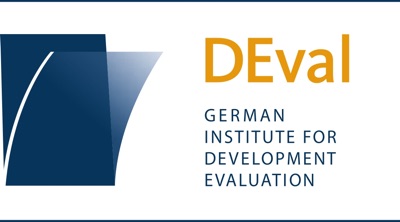
Structured Funds in Development Cooperation
Structured funds are designed to make it easier for private investors to invest in development interventions. DEval investigated how successful the funds are in achieving this, and whether they generate the desired development impact while being financially sustainable at the same time. The evaluation was completed in 2020.
Substantial financial resources will be required for achieving the Sustainable Development Goals agreed in the 2030 Agenda. However, these resources cannot be raised through official finance alone. Yet private investors often tend to be cautious about investing in developing or emerging countries because they see the risks involved as very high. This is why forms of financing that combine official resources with private capital are becoming increasingly popular. This type of financing is also referred to as 'blended finance'. Structured funds are a blended finance approach in which there are various risk categories. Official donors assume the highest risk category, thus reducing the risk for private investors. So far, however, little is known about the development impact of structured funds.
DEval conducted an evaluation of structured funds as a blended finance approach that is increasingly being used in German development cooperation. Structured funds are legally separate investment funds through which (private) investors can invest in development interventions. The funds usually combine budgetary resources of the German Federal Government and capital market funds of the KfW Development Bank and/or other financial institutions with investments from private actors. The evaluation examined ten structured funds.
Findings and Recommendations
- Structured funds are suitable for mobilising private capital, and most of the evaluated funds now operate on a financially sustainable basis.
-
The funds are very largely able to cover their costs, maintain the official capital and continuously grant loans. In regions and sectors with a higher investment risk, however, significantly less private capital is mobilised than in those with lower risks.
- The funds provide the financial institutions in the partner countries – also referred to as financial intermediaries – with better access to finance opportunities. Overall, more sub-borrowers have access to capital.
-
The funds provide opportunities for long-term finance, also in times of crisis. This contributes to the overall stability and financial sustainability of the financial institutions on the ground and the financial system in the partner country. The financial institutions can thus grant a higher number of loans. Having said that, the borrowing terms for sub-borrowers have barely changed as a result of the funds. This means that so far, access to credit has only rarely become easier for those who were previously unable to obtain financing. Instead, loans tend to be available for sub-borrowers who already had access to finance from financial institutions before, or are now able to obtain loans on a larger scale.
- More exhaustive use should be made of the funds' potential for development impact.
-
For example, the funds should be interlinked more effectively with other interventions for financial market development that form part of bilateral development cooperation. Lending to financial intermediaries should also be made conditional on them expanding business sectors, financial products or sectors that are relevant to development, such as climate action.
- To safeguard the funds' financial sustainability it should be ensured that the funds have a sufficiently high financing volume in the long term. .
-
A portion of the loans should be granted in local currency. It should also be defined how the official donors can exit the funds in the long term.
The evaluation was completed in 2020. This is a summary of the results and recommendations; you can find the complete results and recommendations in the report.
Objectives of the Evaluation
The number of structured funds in which German development cooperation has invested has risen continuously in recent years. These funds receive some 300 million euros in German federal budget resources and around 500 million euros of the KfW's own resources. So far, however, only very limited information is available on the impact of structured funds. The evaluation therefore pursues the following objectives:
- Relate structured funds to the objectives of German development cooperation, and analyse the suitability of the funds as a financing approach for achieving those objectives.
- Analyse the operationalisation of development principles (division of labour, donor harmonisation, strengthening of regional actors).
- Analyse the contribution made towards mobilising additional capital/the sustainability of financing structures.
- Analyse the effects on the quality of financial intermediaries' portfolios and the extent to which target groups are reached.
Context
In order to close the financing gap for achieving the Sustainable development Goals (SDGs), donor countries need to make more use of innovative mechanisms and instruments for development finance. Alongside official capital, these should also increasingly include the mobilisation of private resources.
One of the main factors that discourage private investors from making investments in developing countries is that they consider such investments to be too risky. Although any investment entails financial risks, they are often seen as prohibitively high in emerging and developing countries.
At the same time, many of today's political and economic challenges are of a global nature. These challenges cannot be addressed through 'stand-alone solutions', but only through cooperation across national borders. For instance, this applies to expanding sustainable energy supply, or improving capital market access.
In light of these challenges, structured funds are used in development cooperation to mobilise private capital across countries in support of development funding goals. In the cooperation with regions, structured funds are used in various regional and sectoral contexts, and are seen as offering major potential for financing the SDGs.
An important feature of structured funds is that official donors cover losses up to a certain amount, thus reducing the risks for private investors. This is designed to encourage private investors to invest more in projects that are relevant to development. Most structured funds also offer Technical Assistance (TA) in order to mitigate capacity-related risks and safeguard environmental, social and governance standards.
Methods
The evaluation examined ten structured funds, half of which provide financing for micro, small and medium-sized enterprises (MSMEs) in the funds’ target countries. A theory-based evaluation design was selected. This involved a mixed-method approach that integrates qualitative analytical methods (e.g. desk study, qualitative comparative analysis) and quantitative analytical methods (e.g. logistic regression, quasi-experimental design). The team collected some of the data in case studies in Cambodia, Nigeria, Serbia and Tunisia.
Team
- Magdalena Orth-Rempel Senior Evaluator - Team Leader
- Valerie Habbel Former Evaluator DEval
- Johanna Richter Former Evaluator DEval
- Dr Hanne Roggemann Former Evaluator
Contact
Magdalena Orth-Rempel
Phone: +49 (0)228 336907-952
E-mail: magdalena.orth@DEval.org
Dr Sven Harten
Phone: +49 (0)228 336907-950
E-mail: sven.harten@DEval.org
Related Documents
Publications
- Policy Brief: Strukturierte Fonds in der Entwicklungszusammenarbeit: Zwischen entwicklungspolitischer Wirkung und finanzieller Nachhaltigkeit
- Policy Brief: Structured Funds in Development Cooperation – A Balancing Act between Development Impact and Financial Sustainability
- Strukturierte Fonds. Ein Finanzierungsansatz im Spannungsfeld zwischen finanzieller Nachhaltigkeit und entwicklungspolitischer Wirkung
- Structured Funds. A Balancing Act between Financial Sustainability and Development Impact
- The State of the Evidence on Blended Finance for Sustainable Development
- Blended Finance Evaluation: Governance And Methodological Challenges

